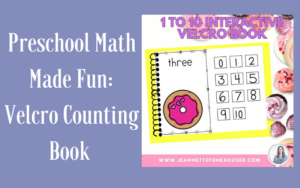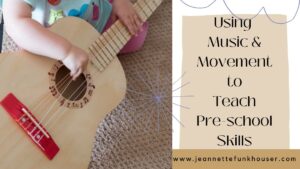Nursery rhymes have been a cherished part of childhood for generations, capturing the hearts and imaginations of children and adults alike. Their rhythmic patterns, simple vocabulary, and engaging stories make them an excellent resource for early childhood education, particularly in pre-kindergarten settings. In this blog post, we will explore the myriad ways nursery rhymes can enrich the pre-K classroom, supporting language development, cognitive skills, social-emotional growth, and much more.
1. Language Development
One of the most significant benefits of using nursery rhymes in the classroom is their ability to promote language development. These short, catchy verses are rich in vocabulary and phonetic sounds, making them ideal for helping children develop their linguistic skills. The repetitive and melodic nature of nursery rhymes aids in improving pronunciation and expanding vocabulary. As children listen to and recite these verses, they become familiar with new words and sentence structures, setting a solid foundation for literacy skills that will benefit them as they progress in their education.
Incorporating interactive activities, such as singing along or creating hand motions to accompany the rhymes, can enhance engagement and reinforce language acquisition. Teachers can encourage children to identify words that sound similar or explore synonyms and antonyms, further enriching their language experience.
2. Phonemic Awareness
Phonemic awareness is a critical component of reading readiness, encompassing the ability to hear and manipulate sounds within words. Nursery rhymes, with their inherent rhyme and rhythm, are invaluable in helping children recognize sound patterns. Activities such as clapping to the beat or identifying rhyming words can significantly enhance their phonemic skills.
For instance, a teacher might emphasize the rhyming pairs in “Hickory Dickory Dock” or “Hey Diddle Diddle,” prompting children to come up with their own rhymes. This playful exploration of sounds not only boosts their phonemic awareness but also lays the groundwork for their future reading success.
3. Memory and Recalling Skills
Learning nursery rhymes encourages memory retention in a fun and engaging way. Children often memorize these short verses, which strengthens their overall memory capabilities. This practice not only boosts their memory skills but also fosters confidence as they share their favorite rhymes with peers and family.
Teachers can create memory games where children match rhymes with corresponding illustrations or engage in group recitations, promoting collaboration and collective memory. Such activities can also lead to discussions about the meanings behind the rhymes, enhancing comprehension and critical thinking skills.
4. Cognitive Development
The simple yet impactful stories within nursery rhymes often include elements of problem-solving and moral lessons. Discussing the narratives can enhance critical thinking and comprehension skills. For example, exploring the story of “Jack and Jill” can lead to discussions about cause and effect, as well as the importance of teamwork and resilience.
Educators can encourage children to draw conclusions about the characters’ actions and their consequences, fostering a deeper understanding of narrative structure and storytelling. This cognitive engagement is vital for developing analytical skills that will serve children throughout their academic journey.
5. Social-Emotional Learning
Nursery rhymes often feature characters experiencing a range of emotions and situations, providing an excellent springboard for discussions about feelings.Participating in group activities with nursery rhymes promotes social interaction, cooperation, and empathy in children, key aspects of social-emotional development.
Teachers can lead discussions about the characters’ emotions, helping children express their own feelings and connect with others. Role-playing and creating dialogues around the stories can deepen this understanding, fostering community and emotional awareness.
6. Cultural Awareness
Many nursery rhymes are rooted in cultural traditions, and introducing a variety of rhymes from different backgrounds can promote diversity and inclusivity in the classroom. This exposure helps children appreciate different perspectives and traditions, fostering a sense of community and belonging.
For instance, a teacher might include nursery rhymes from various cultures, discussing their origins and meanings. This can lead to enriching conversations about diversity, encouraging children to share their own cultural stories and experiences, thus building a richer classroom environment.
7. Creative Expression
Incorporating nursery rhymes into the classroom allows for creative expression through art, movement, and drama. Children can illustrate their favorite rhymes, create puppets, or even perform skits based on the stories. These activities ignite imagination and encourage self-expression, which are crucial aspects of early childhood development.
Teachers can organize art projects where children create visual representations of the characters or scenes from their favorite rhymes. Additionally, movement activities, such as dance or acting out the stories, can provide an outlet for creativity and physical activity, making learning a multi-sensory experience.
8. Fun and Engagement
Above all, nursery rhymes are fun! The playful language, silly characters, and catchy tunes captivate young learners. Integrating music and movement with nursery rhymes can enhance language!













